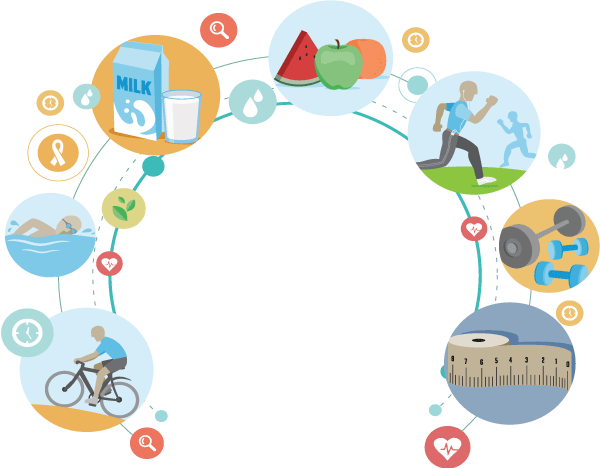Profile of the Unvaccinated, and Why We Care
Sahar Rammaha, MSIII - Michigan State University College of Osteopathic Medicine
EMRA MSC Midwest Coordinator, 2021-2022
Danielle Andrews, MSIV - Loyola University Chicago Stritch School of Medicine
EMRA MSC Great Plains Regional Representative, 2021-2022
“And last question Mrs. Thomas, what is your COVID vaccination status?” I asked, while she looked at me, slightly withdrawn. “Oh, no I’m not vaccinated,” she sighed. Normally I walk away after the patient interview is complete and don’t pester her with further questions. Yet, something compelled me to ask, “I see, is there any reason for that?” Her response really surprised me.
She was trying to get the vaccine when it was first released to the public, but the available time slots were quickly filled. Then, she was laid off and was unable to schedule an appointment. Now that she works full-time as a single mother of four, she can’t afford to take time off. Without a babysitter, she fears she wouldn’t be able to care for her kids if she needs recovery time from a vaccine reaction - “and if I can’t take care of the kids… who will?”
I left that shift wondering about Mrs. Thomas and others like her: willing to get vaccinated, but unable to overcome barriers. How can we help these patients?
In the United States, vaccination efforts against COVID-19 have been broadly available and free to adults since mid-April 2021 and children aged 5 and older since October 2021 [1]. As of January 2022, 62.3% of the population is reported to be fully vaccinated. But what about the remaining 37.7% [2]?
As you encounter unvaccinated patients, be mindful of offering empathy and understanding, even as you deal with the valid feelings of exhaustion this pandemic has wrought.
Why frustration is not the answer
People choose not to take the COVID-19 vaccine for many reasons, and we shouldn’t overlook the historic inequities in health care. The best approach we can take is being informed and respectful. It’s important to take an interest in each patient as an individual, and work towards determining the underlying reasons behind someone’s hesitancy to take the vaccine.
Barriers to Vaccination
There are probably hundreds of untold barriers in receiving the vaccine that aren’t well-known. These reasons only come to surface when we take an interest in the individual in front of us. Here are a few to be familiar with:
- Incidental billing
For individuals living in the United States, COVID-19 vaccines are 100% free regardless of one's insurance status. However, there have been reported cases of patients who received a bill [3]. To avoid future bills, patients become hesitant on receiving the second dose or booster vaccines. If you find your patient fitting this criterion, direct them towards reporting the matter to the Office of the Inspector General, U.S. Department of Health and Human Services, by calling 1-800-HHS-TIPS or visit the website TIPS.HHS.GOV. - Affordability
While the vaccine itself is free, there are some hidden economic barriers. The side effects, although minimal, are very well-documented. To those who can’t afford a couple days off work, the option of getting vaccinated becomes slightly more challenging. Many places don’t offer the vaccine outside of typical business hours, which can mean patients must choose between earning their wage or protecting their health. There are some employers who are providing accommodations so employees can get the vaccine, which helps alleviate some stress one may experience. If you find your patient struggling with scheduling concerns, consider helping by tracking down facilities open outside of their work hours, and counsel them on scheduling a vaccine before a day off or a light-duty day, if possible. - Fear of needles
To be honest, I myself experience trypanophobia… and apparently so does a sizable amount of our population. During a 15-minute observation period after receiving the booster, I came across an older gentleman who was just receiving his first dose. We got to talking, and the reason for his delay was fear of needles! What changed? His PCP spent time explaining how getting vaccinated comes at a smaller cost than actually getting the virus, especially with his co-morbid conditions. Providing him with a carefully considered response was the driving factor in his decision to face his fears. - Lack of PCP longevity
Statistics show as many as 25% of Americans don’t have a primary care physician [4]. Yet a survey conducted at George Washington University showed that 53% of unvaccinated Americans would prefer getting the vaccine at their doctor’s office. How do PCPs and the COVID vaccine relate? Primary care physicians spend years creating strong relationships with their patients. This serves as a safe space for patients to ask questions without feeling judged. Take the guy who was afraid of needles, for example. After hearing about why receiving the vaccine was critical for his health, he felt comfortable and informed enough to make a decision that served him. PCPs are masters of counseling and establishing trust, but this leaves a gap for the 25% of the population who don’t regularly see one. Who can they trust? If a patient comes into the ED, ask them if they have an established PCP. If they don’t, this would be a good time to explain the benefits of having one and offering to connect with some that are in-network with your hospital. - Distrust in Medical Community
Many of us have likely encountered a patient interaction in which the patient appeared more closed off and reserved, or hesitant to discuss their medical concerns with a medical provider. Or perhaps we have met people in our lives that prefer not to see a medical professional at all regardless of their current state of health. Why would people intentionally avoid the medical system to treat their health? That is a really complicated answer. One explanation delves deep into the history of America and the unfair treatment of marginalized communities for the purpose of advancing science and technology. An example occurred in 1932 where the United States Public Health Services (USPHS) conducted a study on African American men in the Tuskegee Institute to study the natural course of syphilis. Six hundred African American men were enrolled in this trial; 399 of them were screened to have syphilis, the rest did not. The men were not given informed consent, were told they have “bad blood” and would be given treatment for it [8]. Those who had syphillis, however, were never given real medication to treat syphilis and instead intentionally given a placebo, despite treatment being available during this time. The study lasted for 40 years and led to the morbidity and mortality of many lives [9]. Examples such as this are some of the reasons why many minority communities have an understandable distrust in the intentions of medical professionals, especially when they come from a different cultural background, in part due to fear of further exploitation.
While this is an unfortunate part of our medical history in the United States, we have made enormous strides to correct this and ensure an ethical process by which we use as the foundation for our research and medical advances. In the 1970s, the study was stopped and deemed unethical, and President Clinton gave a formal apology [8]. Since then, many new laws and commission boards were created. This includes having required and voluntary informed consent of all participants in a study, and the creation of the Institutional Review Boards that reviews all studies involving humans to ensure ethical processes are used [10]. These and many more laws are enacted today to regulate the standards of medical research and prevent this type of exploittion from ever happening again.
How can I help
Initiate a discussion. After learning a patient is unvaccinated, try to find out why. Be sure to create a safe, non-judgmental atmosphere for this conversation. Once you gently ask, you’ll be able to filter out those who could use your help from those who are comfortable with their decision. Just as the COVID-19 virus continues to evolve, so too does each individual’s perspective. A timely, thoughtful conversation might be the key to helping your patient get vaccinated.
References:
- A timeline of covid-19 vaccine developments in 2021. AJMC. https://www.ajmc.com/view/a-timeline-of-covid-19-vaccine-developments-in-2021.
- Ritchie H, Mathieu E, Rodés-Guirao L, et al. Coronavirus (COVID-19) vaccinations. Our World in Data. Accessed January 10, 2022 from https://ourworldindata.org/covid-vaccinations?country=USA. Published March 5, 2020.
- Maloy AF. The bewildering ordeal of getting billed for a coronavirus vaccine. The Washington Post. Published November 9, 2021. Accessed January 10, 2022 from https://www.washingtonpost.com/lifestyle/2021/11/09/vaccine-fee-bill-charge-coronavirus/.
- Levine DM, Linder JA, Landon BE. Characteristics of Americans With Primary Care and Changes Over Time, 2002-2015. JAMA Intern Med. 2020;180(3):463–466. doi:10.1001/jamainternmed.2019.6282
Terrell K. Companies paying employees to get COVID-19 vaccine. AARP. https://www.aarp.org/work/working-at-50-plus/info-2021/companies-paying-employees-covid-vaccine.html. - Shmerling RH. Unvaccinated and misunderstood? Let's talk. Harvard Health. https://www.health.harvard.edu/blog/unvaccinated-and-misunderstood-lets-talk-202108252580. Published August 25, 2021.
- Tufekci Z. The unvaccinated may not be who you think. The New York Times. https://www.nytimes.com/2021/10/15/opinion/covid-vaccines-unvaccinated.html. Published October 15, 2021. Accessed January 19, 2022.
- Tuskegee Study - Timeline - CDC - NCHHSTP. Centers for Disease Control and Prevention. https://www.cdc.gov/tuskegee/timeline.htm. Published April 22, 2021.
- 40 years of human experimentation in America: The tuskegee study. Office for Science and Society. https://www.mcgill.ca/oss/article/history/40-years-human-experimentation-america-tuskegee-study. Published December 30, 2020.
- Centers for Disease Control and Prevention. (2021, April 22). Tuskegee Study - Research Implications - CDC - NCHHSTP. Centers for Disease Control and Prevention. Retrieved January 21, 2022, from https://www.cdc.gov/tuskegee/after.htm







